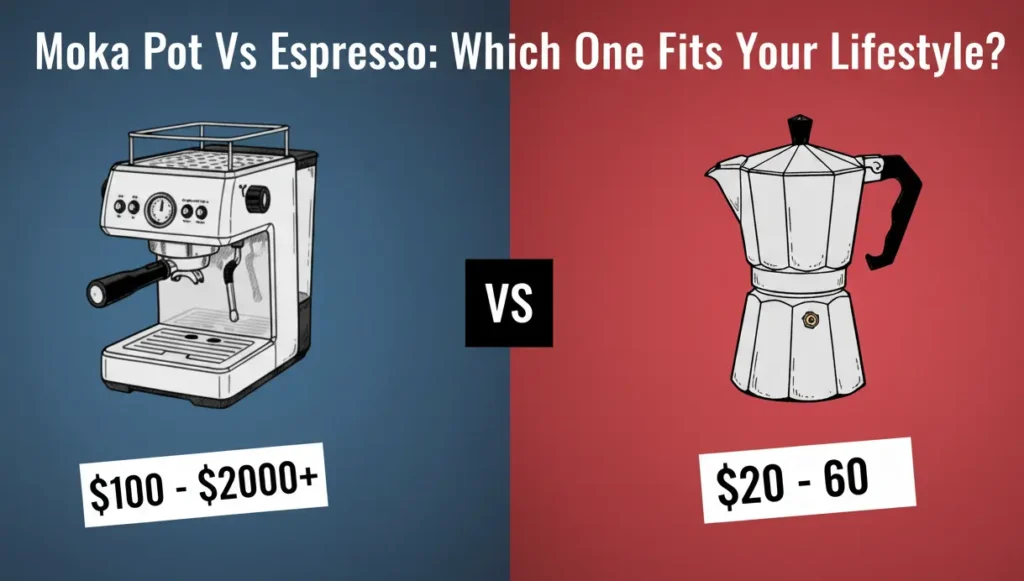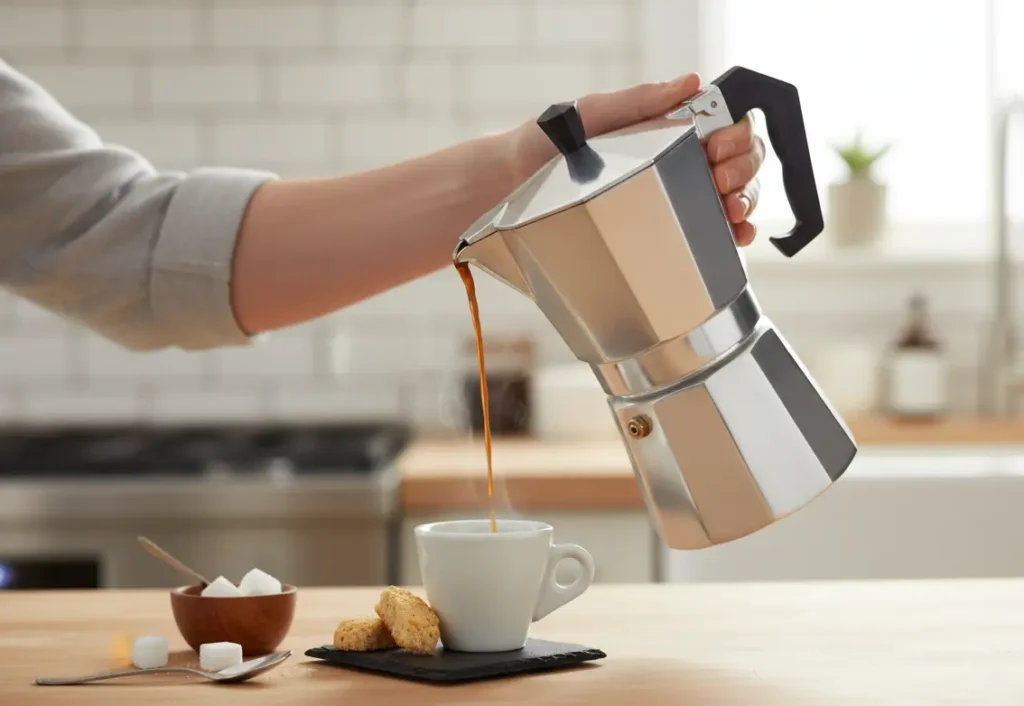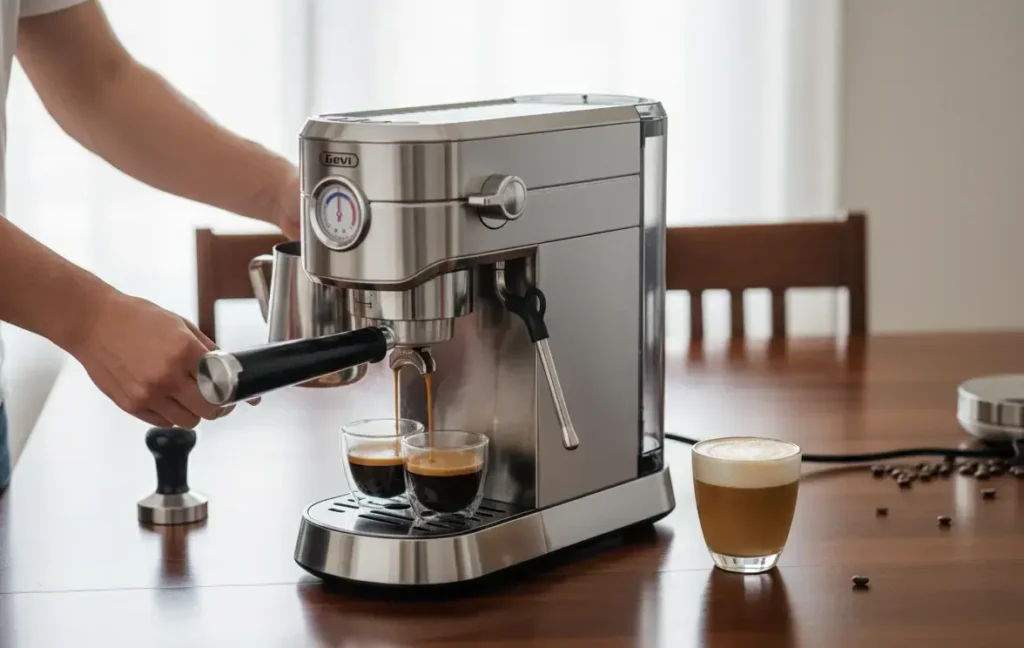If you want to make the perfect cup of espresso with your Breville machine, you’re in the right place. Getting that rich, smooth flavor isn’t just about pressing a button—it’s about knowing the little tricks that turn good coffee into great coffee.
You’ll discover easy tips to improve your brewing, save time, and enjoy every sip. Whether you’re new to your Breville espresso machine or looking to up your game, these tips will help you get the most from your machine and impress yourself with barista-level drinks at home.
Keep reading, and your mornings will never be the same.

How to Choose the Right Breville Espresso Machine
Choosing the right Breville espresso machine makes a big difference. It affects the taste, ease, and how much you enjoy your coffee. Breville offers many models. Each one has special features. Finding the best fit saves time and money. It helps you make coffee like a pro at home.
Comparing Popular Models
Breville Barista Express is a favorite for beginners. It has a built-in grinder and simple controls. The Barista Pro offers a faster heat-up time and a digital display. The Barista Touch adds a touchscreen for easy use. The Dual Boiler suits serious coffee lovers. It allows making two espresso shots at once. The Bambino Plus is compact and heats quickly. It fits small kitchens well.
Features To Consider
Think about grinder type. Some models have built-in grinders. Others need a separate grinder. Look at the water tank size. Larger tanks need less refilling. Check the heating system. Thermocoil or dual boiler impact temperature control. Consider steam wand features. Some machines offer automatic milk frothing. Others need manual frothing skills. Size and design matter for your kitchen space. Also, check the ease of cleaning parts.
Essential Setup Tips for Your Breville Espresso Machine
Setting up your Breville espresso machine correctly is key to great coffee. Proper setup helps the machine work well and lasts longer. Small steps make a big difference in taste and machine care.
Focus on the basics first. The quality of water and where you place the machine affect your espresso’s flavor and machine health. Let’s explore these essential tips.
Proper Water Quality
Use fresh, clean water for the best espresso taste. Tap water may contain minerals that affect flavor and damage the machine. Filtered or bottled water is a better choice.
Soft water helps avoid scale build-up inside the machine. Too much mineral can clog pipes and reduce machine life. Check your water hardness and use filters if needed.
Change the water daily. Stale water can ruin your coffee’s flavor. Always use cold water for the best extraction.
Optimal Machine Placement
Place your espresso machine on a flat, stable surface. Stability prevents spills and keeps the machine safe. Avoid areas near heat sources like ovens or direct sunlight.
Keep some space around the machine. Good air flow helps the machine cool down after use. Crowded spaces can cause overheating or damage.
Place it near a power outlet and water source. This makes setup easier and reduces the risk of tripping over cables.
Grind Size And Coffee Beans
Grind size and coffee beans are key to making great espresso with your Breville machine. The grind affects how water flows through the coffee and extracts flavors. Fresh beans ensure the best taste and aroma. Both factors work together to create a rich, balanced cup. Pay close attention to these details for a better espresso experience.
Selecting Fresh Beans
Choose beans roasted recently for a fresh taste. Old beans lose flavor and smell. Buy small amounts to keep beans fresh. Store them in an airtight container away from light and heat. Fresh beans make your espresso smooth and aromatic.
Adjusting Grind For Flavor
Fine grind suits espresso, but it may vary by bean type. Too fine causes bitter taste and slow extraction. Too coarse leads to weak, sour espresso. Adjust grind size in small steps. Test and taste each change to find the best balance. Proper grind size brings out coffee’s full flavor.

Perfecting The Espresso Shot: Breville Espresso Machine Tips and Tricks
Making a great espresso shot with your Breville machine takes some care and practice. Small changes can make a big difference in taste and texture. This section helps you get the best results by focusing on key steps. Follow these tips to improve every shot you pull.
Tamping Techniques
Tamping means pressing the coffee grounds evenly in the portafilter. Use firm, even pressure to create a flat, compact surface. Avoid pressing too hard or too soft. Aim for about 30 pounds of pressure. A level tamp helps water flow evenly through the coffee. This stops weak or bitter flavors. Clean and dry the portafilter before tamping. Wipe away loose grounds for a better seal.
Shot Timing And Extraction
The right shot time is usually 25 to 30 seconds. Start timing as soon as you start the pump. A fast pour means the grind is too coarse or tamp is light. Slow dripping means the grind is too fine or tamp is too hard. Watch the color and flow. It should be a steady stream, golden brown with thick crema. Adjust grind size or tamp pressure to find the sweet spot. Consistency is key for great espresso every time.
Milk Frothing Tips for Breville Machines
Milk frothing is key for great espresso drinks. Perfect foam changes the taste and look. Using a Breville espresso machine makes frothing easier. You need some practice and simple tricks. These tips help you get creamy, smooth milk.
Steaming Tips For Creamy Texture
Start with cold milk. Fill the pitcher only halfway. Use fresh, whole milk for best results. Insert the steam wand just below the surface. Turn on steam and lower the pitcher slowly. Listen for a gentle hissing sound. This means air is mixing into the milk.
Keep the wand near the surface to create tiny bubbles. Avoid big bubbles, they make foam rough. After adding enough air, push the wand deeper. This heats and mixes milk evenly. Move the pitcher slowly in a circle. This helps create a smooth texture.
Turn off steam before removing the wand. Wipe the wand with a damp cloth. Tap the pitcher on the counter to remove big bubbles. Swirl the milk for a glossy finish. Now your milk is ready to pour.
Milk Temperature Control
Milk should be warm, not hot. Aim for 140°F to 150°F (60°C to 65°C). Use a thermometer to check temperature. Too cold milk creates weak foam. Too hot milk tastes burnt and loses sweetness.
Practice feeling the pitcher’s heat with your hand. Stop steaming when the pitcher feels hot but still comfortable. Overheated milk breaks down and loses texture. Cool milk quickly if it gets too hot. Pour gently for the best foam on your espresso.

Breville Espresso Machine Maintenance Tips
Keeping your Breville espresso machine clean is key to great coffee. Regular care protects the machine parts. It also keeps the taste fresh and pure. Dirt and coffee oils can build up fast. This affects the machine’s work and the coffee flavor. Follow these cleaning and maintenance tips to keep your machine ready for every cup.
Daily Cleaning Routine
Empty the drip tray and coffee grounds container each day. Rinse them with warm water. Wipe the steam wand after every use to stop milk buildup. Use a damp cloth to clean the machine’s exterior. Run a water-only brew cycle once a day. This clears coffee residue from the group head. Clean the portafilter and baskets with hot water.
Descaling And Deep Cleaning
Descale the machine every 2-3 months. Use a Breville-approved descaling solution. Follow the instructions in your user manual. Descaling removes mineral build-up inside the machine. Run the descaling cycle fully to protect internal parts. Deep clean the group head with a cleaning tablet monthly. Soak the portafilter and baskets in hot water and detergent. Rinse everything well before use. Regular deep cleaning keeps your espresso tasting perfect.
Advanced Breville Brewing Tricks for Better Espresso
Advanced brewing tricks help you get better espresso from your Breville machine. These tips focus on fine-tuning your process. Small changes can make a big difference in flavor and texture. Experiment carefully to find what works best for your taste.
Pre-infusion Techniques
Pre-infusion wets the coffee grounds lightly before full pressure starts. This step helps release gases and improves extraction. Use the machine’s pre-infusion setting if available. Start with a short time, around 3 to 5 seconds. Adjust the time based on how your espresso tastes.
Try different grind sizes for better pre-infusion results. Finer grinds may need a shorter pre-infusion. Coarser grinds might benefit from a longer wetting phase. Watch the crema and flavor to guide your adjustments.
Pressure And Temperature Tweaks
Pressure and temperature affect espresso taste and texture. Breville machines often allow some control over these settings. Aim for about 9 bars of pressure during extraction. Lower pressure can create a milder taste; higher pressure extracts more flavor but can add bitterness.
Temperature affects how coffee oils and acids dissolve. Set your machine near 195-205°F (90-96°C). Cooler water highlights acidity and brightness. Hotter water brings out deeper, richer notes. Adjust slowly and test often to find your ideal balance.
Troubleshooting Common Issues
Troubleshooting common issues with your Breville espresso machine helps keep your coffee tasting great. Small problems can stop your machine from working well. Fixing these problems quickly saves time and avoids frustration.
Most issues relate to weak shots or frothing troubles. Both affect the quality of your espresso and milk texture. Knowing simple fixes makes your coffee routine smooth. Let’s explore how to solve these common problems easily.
Fixing Weak Shots
Weak espresso shots usually mean the coffee tastes watery or sour. This happens if the grind size is too coarse. Use a finer grind for a richer flavor. Also, check the dose. Too little coffee causes weak shots. Use the right amount, about 18-20 grams for double shots.
Make sure the machine’s water temperature is correct. Too low temperature can affect extraction. Clean the portafilter and group head regularly. Old coffee oils block water flow and weaken shots. Tamp the coffee evenly and firmly for good pressure. Uneven tamping causes uneven extraction and weak coffee.
Resolving Frothing Problems
Frothing problems make milk foam thin or not creamy. First, check if the steam wand is clean. Milk residue blocks steam flow and hurts frothing. Purge the steam wand before each use to clear water or milk.
Use cold, fresh milk with higher protein content. Whole milk froths better than skim milk. Position the steam wand just below the milk surface. Too deep or too shallow stops good foam from forming. Move the pitcher in a circular motion to create smooth microfoam.
Check the steam pressure. Low pressure means weak steam and poor froth. If pressure is low, descale your machine to remove mineral build-up. Regular cleaning keeps frothing performance strong and reliable.
FAQs: Breville Espresso Machine Tips, Cleaning, and Frothing
How Do I Clean My Breville Espresso Machine Regularly?
Clean the group head, portafilter, and steam wand after each use to keep taste fresh.
What Grind Size Works Best For Breville Espresso Machines?
Use a fine grind, similar to table salt, for the best espresso extraction.
How Can I Improve Milk Frothing With My Breville Machine?
Purge the steam wand first, then position it just below milk surface for smooth foam.
Why Is My Espresso Shot Coming Out Too Fast?
Check grind size; too coarse or light tamping causes fast, weak espresso shots.
How Often Should I Descale My Breville Espresso Machine?
Descale every 2-3 months to prevent mineral buildup and keep machine working well.
Can I Use Pre-ground Coffee With A Breville Espresso Machine?
Yes, but fresh ground coffee gives better flavor and crema in your espresso shots.
Conclusion
Breville espresso machines work best with care and practice. Use these tips to improve your coffee every day. Clean your machine regularly for fresh taste. Adjust grind size and tamp pressure for perfect shots. Experiment with milk frothing to find your favorite texture.
Small changes make a big difference in flavor. Enjoy the process of making coffee at home. Keep learning and trying new things with your machine. Great espresso comes from simple steps done well. Your perfect cup is just a few tries away.

Hi, I’m Joshua Miller, a U.S.-based food lover, review writer, and Co-founder of KitchenWink.com. I hold a Bachelor of Science in Food Science and Culinary Technology, and for over five years I’ve been testing kitchen gadgets like air fryers, blenders, and other cooking tools.
I’m also a home cook, so every product I review is tried in real kitchens—not just in theory. My reviews are based on real results, simple fixes, and tips that anyone can use. With both formal training and hands-on testing, I make sure my advice is clear, honest, and practical.
My goal is simple: to help home cooks choose the right tools and make cooking easier every day.




